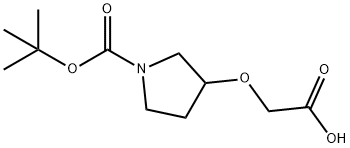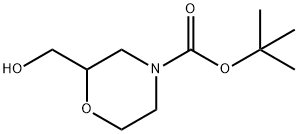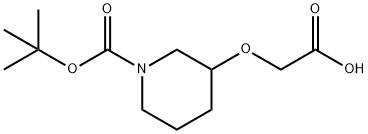2-(2-BOC-AMINOETHOXY)ETHANOL
Synonym(s):[2-(2-Hydroxyethoxy)ethyl]carbamic acid 1,1-dimethylethyl ester;N-[2-(2-Hydroxyethoxy)ethyl]carbamic acid tert-butyl ester;tert-Butyl[2-(2-hydroxyethoxy)ethyl]carbamate;2-(2-tert-Butoxycarbonylaminoethoxy)ethanol
- CAS NO.:139115-91-6
- Empirical Formula: C9H19NO4
- Molecular Weight: 205.25
- MDL number: MFCD04038542
- SAFETY DATA SHEET (SDS)
- Update Date: 2024-03-25 20:41:16

What is 2-(2-BOC-AMINOETHOXY)ETHANOL?
Description
N-Boc-PEG2-alcohol is a PEG linker containing a hydroxyl group and Boc-protected amino group. The hydrophilic PEG spacer increases solubility in aqueous media. The hydroxyl group enables further derivatization or replacement with other reactive functional groups. The Boc group can be deprotected under mild acidic conditions to form the free amine.
The Uses of 2-(2-BOC-AMINOETHOXY)ETHANOL
2-[2-(Boc-amino)ethoxy]ethanol is N-terminal protected 2-(2-aminoethoxy)ethanol. It is generally used as a molecular spacer/linker. Some of such applications are:
- Synthesis of biotinylated HaloLigands to prepare quantum dot adducts for HaloTag protein-mediated specific labeling of live cells.
- It is one of the key precursors for the total synthesis of tyroscherin and photo-activatable tyroscherin-based affinity reagent used for identification of tyroscherin binding proteins.
- It can be used to link HaloTag enzyme with fluorescent zinc indicator, ZIMIR to monitor the dynamics of regulated secretion of zinc in real time.
- It can also be used to synthesize amphiphiles for DNA and siRNA delivery.
Properties of 2-(2-BOC-AMINOETHOXY)ETHANOL
| Boiling point: | 332.9±22.0 °C(Predicted) |
| Density | 1.061 g/mL at 25 °C |
| refractive index | n20/D1.454 |
| Flash point: | >110℃ |
| storage temp. | Keep in dark place,Sealed in dry,Room Temperature |
| solubility | Chloroform (Slightly), DMSO (Slightly), Ethyl Acetate (Slightly), Methanol (Slightly) |
| form | clear liquid |
| pka | 12.20±0.46(Predicted) |
| color | Colorless to Light orange to Yellow |
Safety information for 2-(2-BOC-AMINOETHOXY)ETHANOL
| Signal word | Danger |
| Pictogram(s) |
 Skull and Crossbones Acute Toxicity GHS06 |
| GHS Hazard Statements |
H301:Acute toxicity,oral H315:Skin corrosion/irritation H319:Serious eye damage/eye irritation |
| Precautionary Statement Codes |
P302+P352:IF ON SKIN: wash with plenty of soap and water. P305+P351+P338:IF IN EYES: Rinse cautiously with water for several minutes. Remove contact lenses, if present and easy to do. Continuerinsing. |
Computed Descriptors for 2-(2-BOC-AMINOETHOXY)ETHANOL
New Products
4-Fluorophenylacetic acid 4-Methylphenylacetic acid N-Boc-D-alaninol N-BOC-D/L-ALANINOL Tert-butyl bis(2-chloroethyl)carbamate 3-Morpholino-1-(4-nitrophenyl)-5,6-dihydropyridin- 2(1H)-one Furan-2,5-Dicarboxylic Acid Tropic acid S-2-CHLORO PROPIONIC ACID ETHYL ISOCYANOACETATE 2-Bromo-1,3-Bis(Dimethylamino)Trimethinium Hexafluorophosphate (6-METHYL-[1,3]DITHIOLO[4,5-b]QUINOXALIN-2-ONE INDAZOLE-3-CARBOXYLIC ACID 4-IODO BENZOIC ACID (2-Hydroxyphenyl)acetonitrile 4-Bromopyrazole 5,6-Dimethoxyindanone 2-(Cyanocyclohexyl)acetic acid 4-methoxy-3,5-dinitropyridine 2-aminopropyl benzoate hydrochloride 1-(4-(aminomethyl)benzyl)urea hydrochloride diethyl 2-(2-((tertbutoxycarbonyl)amino) ethyl)malonate tert-butyl 4- (ureidomethyl)benzylcarbamate Ethyl-2-chloro((4-methoxyphenyl)hydrazono)acetateRelated products of tetrahydrofuran








You may like
-
![139115-91-6 2-[2-(Boc-amino)ethoxy]ethanol 98%](https://img.chemicalbook.in//ProductImageIndia/2024-03/Raw/9fda394f-b5d4-4c0d-bfc5-d6b87e9023b9.png) 139115-91-6 2-[2-(Boc-amino)ethoxy]ethanol 98%View Details
139115-91-6 2-[2-(Boc-amino)ethoxy]ethanol 98%View Details
139115-91-6 -
![2-[2-[(tert-Butoxycarbonyl)amino]ethoxy]ethanol CAS 139115-91-6](https://img.chemicalbook.in//Content/image/CP5.jpg) 2-[2-[(tert-Butoxycarbonyl)amino]ethoxy]ethanol CAS 139115-91-6View Details
2-[2-[(tert-Butoxycarbonyl)amino]ethoxy]ethanol CAS 139115-91-6View Details
139115-91-6 -
![2-[2-(Boc-amino)ethoxy]ethanol CAS 139115-91-6](https://img.chemicalbook.in//Content/image/CP5.jpg) 2-[2-(Boc-amino)ethoxy]ethanol CAS 139115-91-6View Details
2-[2-(Boc-amino)ethoxy]ethanol CAS 139115-91-6View Details
139115-91-6 -
 1975-50-4 98%View Details
1975-50-4 98%View Details
1975-50-4 -
 2-HYDROXY BENZYL ALCOHOL 98%View Details
2-HYDROXY BENZYL ALCOHOL 98%View Details
90-01-7 -
 2-Chloro-1,3-Bis(Dimethylamino)Trimethinium Hexafluorophosphate 221615-75-4 98%View Details
2-Chloro-1,3-Bis(Dimethylamino)Trimethinium Hexafluorophosphate 221615-75-4 98%View Details
221615-75-4 -
 14714-50-2 (2-Hydroxyphenyl)acetonitrile 98+View Details
14714-50-2 (2-Hydroxyphenyl)acetonitrile 98+View Details
14714-50-2 -
 118753-70-1 98+View Details
118753-70-1 98+View Details
118753-70-1
Statement: All products displayed on this website are only used for non medical purposes such as industrial applications or scientific research, and cannot be used for clinical diagnosis or treatment of humans or animals. They are not medicinal or edible.